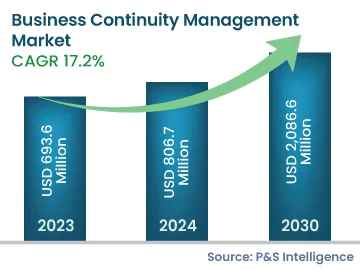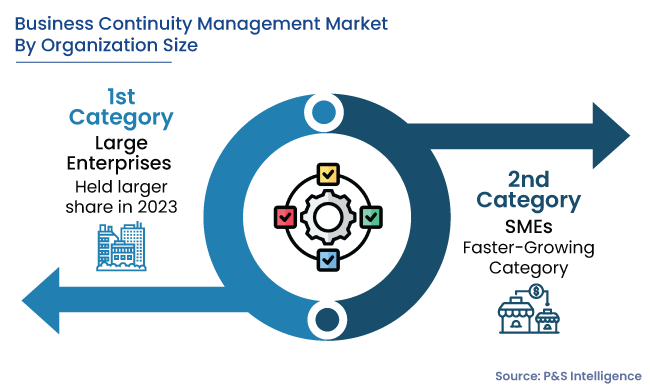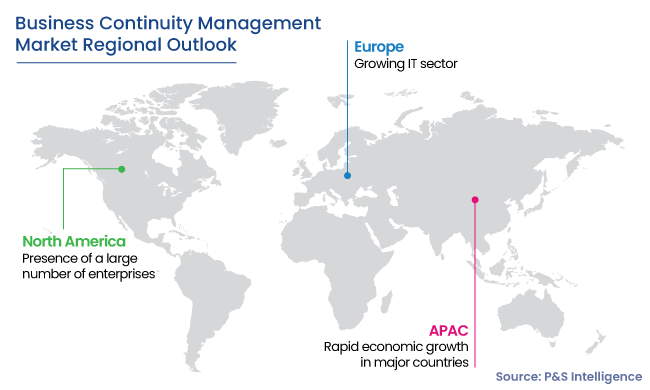The business continuity management market value will reach USD 2,086.6 million in 2030.
The market for business continuity management will reach USD 806.7 million in 2024.
The rising adoption of business continuity management in SMEs is the key business continuity management industry trend.
BFSI industry hold the larger business continuity management market share.
The North American market for business continuity management is the largest.
The business continuity management industry is fragmented in nature.





